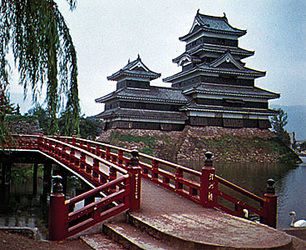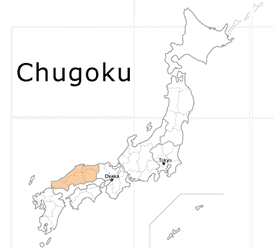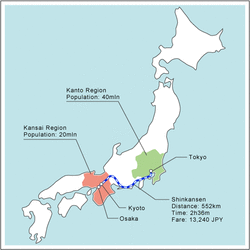Settlement Patterns of Japan
The first recorded patterns started in the 7th century, the Taika Era of Japan. Ri (villages) were formed, and gun (districts) grouped together these Ri. These Gun were grouped to from 60 Kuni, or provinces. Every district was formed to be geographically independent - every district had seas, basins, and mountains. Teh core region where the capital was (the capital moved around a lot) was called the Kinai.
By the Nara and Heian periods, the east and the west of three great mountains, Arachi, Fuwa, and Suzuka, were called Kanto and Kansai. Eventually Kansai became considered the core reagion around the Capital (the equivalent of Kinai) and Kanto represented regions east of a pass near Hakone, a local town. Regions not under the direct control of the government were classfied as Ezochi.
After the 10th century, kuni became categorized by their distance from Kyoto (the capital at the time). Kingoku were close kuni, Chugoku were intermediate, and Engoku, remote distances. Everything was slowly becoming organized and classfied, including the minor islands.
By 1871, the previous feudal system was gone, and a prefectural/ken system replaced it. At first, all of the previous fiefs made the prefectures, making the numbers go over 300, and the feudal lords became governors, but by 1888, there was a system of 43 ken, 3 fu (major urban prefectures, Tokyo, Osaka, and Kyoto), and one Do (Hokkaido). There were elected and chosen governors in place of feudal lords, and the Kuni system was abolished.
From the early 20th century, to today, only one change occured. The government realised that bigger divisions were needed, because they provided more control, and so 8 chiho, or regions were established.
Rural villages have all been affected by urbanization, but they also preserve historical aspects of Japanese life. They are spread in agglomerated, dispersed, elongated, or scattered patterns. However, as mentioned in the introduction, because so little land is able to be farmed, more and more people are taking jobs or moving to urban cities. There are very few hunting villages remaining in the mountains, and fishing and rice villages, which are more common.
Urban cities developed mainly around major centres where there were a lot of people, which included international ports, naval bases, castle towns, shrine towns, and industries. There were often major cities located around raw materials or power sources.
(Encyclopaedia Britannica)
By the Nara and Heian periods, the east and the west of three great mountains, Arachi, Fuwa, and Suzuka, were called Kanto and Kansai. Eventually Kansai became considered the core reagion around the Capital (the equivalent of Kinai) and Kanto represented regions east of a pass near Hakone, a local town. Regions not under the direct control of the government were classfied as Ezochi.
After the 10th century, kuni became categorized by their distance from Kyoto (the capital at the time). Kingoku were close kuni, Chugoku were intermediate, and Engoku, remote distances. Everything was slowly becoming organized and classfied, including the minor islands.
By 1871, the previous feudal system was gone, and a prefectural/ken system replaced it. At first, all of the previous fiefs made the prefectures, making the numbers go over 300, and the feudal lords became governors, but by 1888, there was a system of 43 ken, 3 fu (major urban prefectures, Tokyo, Osaka, and Kyoto), and one Do (Hokkaido). There were elected and chosen governors in place of feudal lords, and the Kuni system was abolished.
From the early 20th century, to today, only one change occured. The government realised that bigger divisions were needed, because they provided more control, and so 8 chiho, or regions were established.
Rural villages have all been affected by urbanization, but they also preserve historical aspects of Japanese life. They are spread in agglomerated, dispersed, elongated, or scattered patterns. However, as mentioned in the introduction, because so little land is able to be farmed, more and more people are taking jobs or moving to urban cities. There are very few hunting villages remaining in the mountains, and fishing and rice villages, which are more common.
Urban cities developed mainly around major centres where there were a lot of people, which included international ports, naval bases, castle towns, shrine towns, and industries. There were often major cities located around raw materials or power sources.
(Encyclopaedia Britannica)




